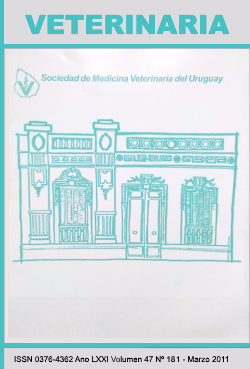Health status of honey bees in Uruguay
Keywords:
Honeybees, Bee diseases, Varroa destructor, Nosema ceranae, UruguayAbstract
In the last years, considerable loss of honeybees colonies has been detected in many countries around the world, and mainly in Northern Hemisphere ones. Pathogens and parasites are ahead as likely responsible agents of such loss. In Uruguay, mortality of colonies has increased significantly in the last decades, though not as much as in the United States of America and some European countries. The mite Varroa destructor is the main sanitary problem, causing colony if it is not properly deparasited. Moreover, the ocurrence of this parasite is associated to the presence of some ARN viruses widely distributed in the country: Acute bee paralysis virus, Chronic bee paralysis virus, Black queen-cell virus, Deformed wing virus and Sacbrood bee virus. So far, Kashmir bee virus and Israeli acute bee paralysis virus, both related to depopulation of colonies, have not been detected. The fungi Nosema ceranae occurs in all the country but has not been associated to considerable loss of colonies. Interestingly, a decrease in the prevalence of brood diseases such as American foulbrood (Paenibacillus larvae), European foulbrood (Melissococcus plutonius), Chalkbrood (Ascosphaera apis) and Sacbrood (virus SBV) has been detected. The increased hygienic behaviour of honeybees in the last 15 years could account for this improvement.











